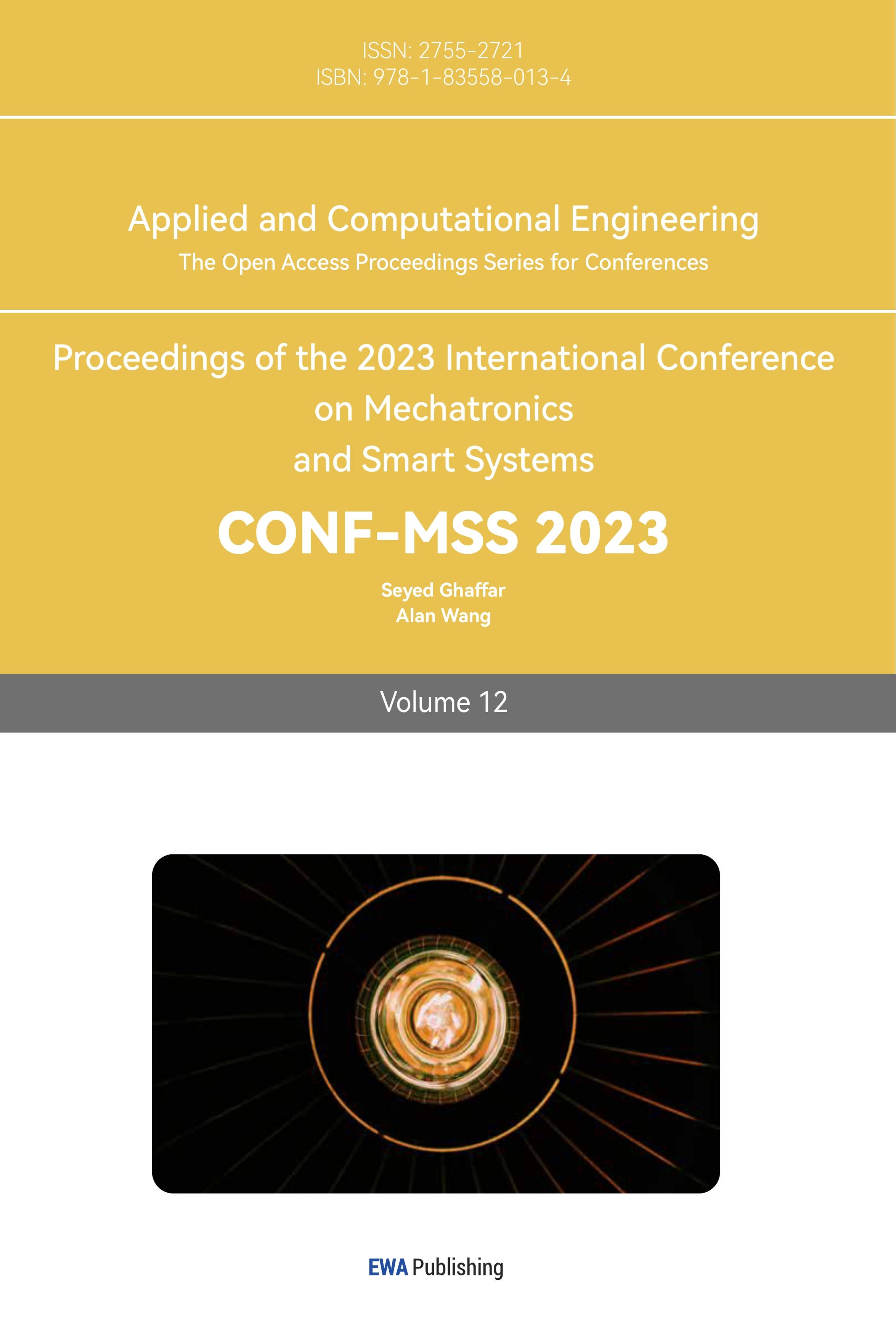References
[1]. Hanhua Xiong and Jun Liu 2003 Chinese Journal of Integrative Gastroenterology 6 2
[2]. Weizhong Gu 2011 Chinese medical equipment 8 3
[3]. Guozheng Yan and Wenwen Chen 2015 Progress in Research on Intestinal Endoscopic Robotics 1 4
[4]. Zongzheng Liu, Ken Chen and Zhenhua Chen, etc 2009 Research Status and Development of Endoscopic Bionic Robot 6 3
[5]. Y. Ge, T. D. Lalitharatne and T. Nanayakkara. 2022 IEEE Robotics and Automation Letters 2 7
[6]. Mengchao Cao 2016 3 92
[7]. X. Wang, W. Chen, J. Wang and S. Song 2022 International Conference on Real-time Computing and Robotics 600
[8]. Y. Xu, K. Li, Z. Zhao and M. Q. . -H. Meng 2022 Automation Science and Engineering 1
[9]. Fuli Ye and Yuxing Yang 2011 Journal of Xianning College 6 3
[10]. Martin, J. W., Barducci, L., Scaglioni, B., Norton, J. C., Winters, C., Subramanian, V., ... & Valdastri, P. 2022 Transactions on Medical Robotics and Bionics 3 599
Cite this article
Chen,P.;Shi,Z. (2023). Capsule endoscopy robotics and SLAM technology. Applied and Computational Engineering,12,73-77.
Data availability
The datasets used and/or analyzed during the current study will be available from the authors upon reasonable request.
Disclaimer/Publisher's Note
The statements, opinions and data contained in all publications are solely those of the individual author(s) and contributor(s) and not of EWA Publishing and/or the editor(s). EWA Publishing and/or the editor(s) disclaim responsibility for any injury to people or property resulting from any ideas, methods, instructions or products referred to in the content.
About volume
Volume title: Proceedings of the 2023 International Conference on Mechatronics and Smart Systems
© 2024 by the author(s). Licensee EWA Publishing, Oxford, UK. This article is an open access article distributed under the terms and
conditions of the Creative Commons Attribution (CC BY) license. Authors who
publish this series agree to the following terms:
1. Authors retain copyright and grant the series right of first publication with the work simultaneously licensed under a Creative Commons
Attribution License that allows others to share the work with an acknowledgment of the work's authorship and initial publication in this
series.
2. Authors are able to enter into separate, additional contractual arrangements for the non-exclusive distribution of the series's published
version of the work (e.g., post it to an institutional repository or publish it in a book), with an acknowledgment of its initial
publication in this series.
3. Authors are permitted and encouraged to post their work online (e.g., in institutional repositories or on their website) prior to and
during the submission process, as it can lead to productive exchanges, as well as earlier and greater citation of published work (See
Open access policy for details).
References
[1]. Hanhua Xiong and Jun Liu 2003 Chinese Journal of Integrative Gastroenterology 6 2
[2]. Weizhong Gu 2011 Chinese medical equipment 8 3
[3]. Guozheng Yan and Wenwen Chen 2015 Progress in Research on Intestinal Endoscopic Robotics 1 4
[4]. Zongzheng Liu, Ken Chen and Zhenhua Chen, etc 2009 Research Status and Development of Endoscopic Bionic Robot 6 3
[5]. Y. Ge, T. D. Lalitharatne and T. Nanayakkara. 2022 IEEE Robotics and Automation Letters 2 7
[6]. Mengchao Cao 2016 3 92
[7]. X. Wang, W. Chen, J. Wang and S. Song 2022 International Conference on Real-time Computing and Robotics 600
[8]. Y. Xu, K. Li, Z. Zhao and M. Q. . -H. Meng 2022 Automation Science and Engineering 1
[9]. Fuli Ye and Yuxing Yang 2011 Journal of Xianning College 6 3
[10]. Martin, J. W., Barducci, L., Scaglioni, B., Norton, J. C., Winters, C., Subramanian, V., ... & Valdastri, P. 2022 Transactions on Medical Robotics and Bionics 3 599









